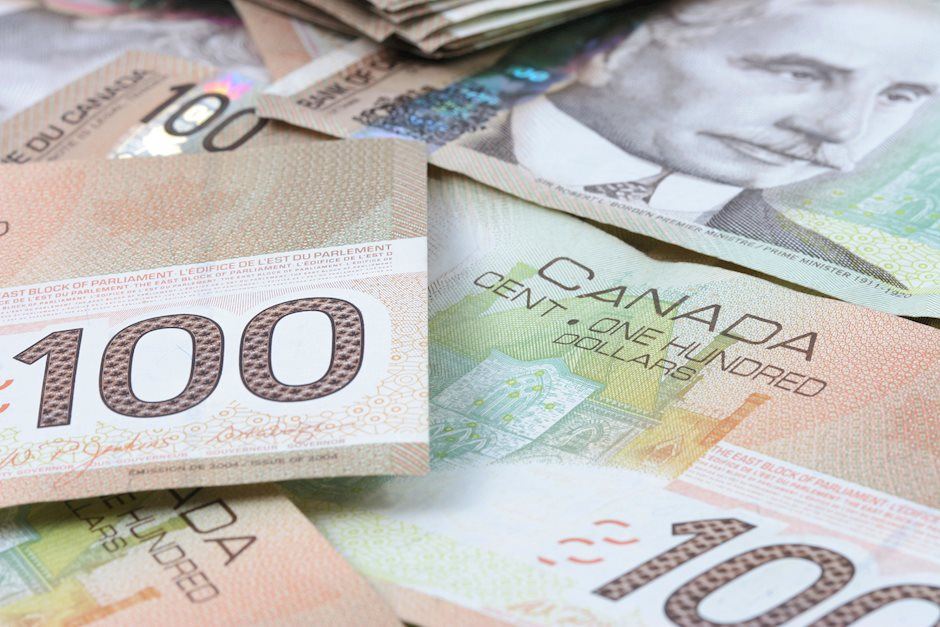USD/CAD posts fresh eight-month high near 1.3850 after robust US GDP growth
- USD/CAD prints a fresh eight-month high near 1.3850 as the US Dollar bounces back after upbeat US Q2 GDP growth.
- Subsiding inflationary pressures keep prospects of Fed rate cuts intact.
- The BoC reduced interest rates again by 25 bps, as expected.

The USD/CAD pair refreshes an eight-month high near 1.3850 in Thursday’s New York session. The Loonie asset strengthens as the US Dollar (USD) has bounced back strongly after upbeat United States (US) Q2 Gross Domestic Product (GDP) growth.
Flash US GDP report showed that the US economy grew at a robust pace of 2.8%, which is double the prior release of 1.4%. Economists expected the economy to have grown by 2.0%. This has strengthened the US economic outlook. The US Dollar Index (DXY), which tracks the Greenback’s value against six major currencies, moves higher to 104.40.
The impact of the strong US GDP growth is expected to remain limited as market expectations for the Federal Reserve (Fed) to begin reducing interest rates from the September meeting remain intact. The GDP Price Index, a key measure to gauge changes in prices of goods and services produced, decelerated sharply to 2.3%.
Going forward, investors will focus on the US Personal Consumption Expenditure Price Index (PCE) data for June, which will be published on Friday.
Meanwhile, the near-term outlook of the Canadian Dollar (CAD) is vulnerable as Bank of Canada (BoC) Governor Tiff Macklem has delivered dovish guidance on interest rates. On Wednesday, the BoC cut its key borrowing rates again by 25 basis points (bps), which declined to 4.5%. Market participants had already anticipated a dovish interest rate decision.
Macklem left the door open for further policy easing if inflation eases in line with the bank’s forecasts. He said in the press conference, “We are increasingly confident that the ingredients to bring inflation back to target are in place.” The BoC sees inflation sustainably returning to the 2% target in the second half of 2025. While Macklem communicated dovish guidance on interest rates, he refrained from providing a specific rate-cut path.
Canadian Dollar FAQs
The key factors driving the Canadian Dollar (CAD) are the level of interest rates set by the Bank of Canada (BoC), the price of Oil, Canada’s largest export, the health of its economy, inflation and the Trade Balance, which is the difference between the value of Canada’s exports versus its imports. Other factors include market sentiment – whether investors are taking on more risky assets (risk-on) or seeking safe-havens (risk-off) – with risk-on being CAD-positive. As its largest trading partner, the health of the US economy is also a key factor influencing the Canadian Dollar.
The Bank of Canada (BoC) has a significant influence on the Canadian Dollar by setting the level of interest rates that banks can lend to one another. This influences the level of interest rates for everyone. The main goal of the BoC is to maintain inflation at 1-3% by adjusting interest rates up or down. Relatively higher interest rates tend to be positive for the CAD. The Bank of Canada can also use quantitative easing and tightening to influence credit conditions, with the former CAD-negative and the latter CAD-positive.
The price of Oil is a key factor impacting the value of the Canadian Dollar. Petroleum is Canada’s biggest export, so Oil price tends to have an immediate impact on the CAD value. Generally, if Oil price rises CAD also goes up, as aggregate demand for the currency increases. The opposite is the case if the price of Oil falls. Higher Oil prices also tend to result in a greater likelihood of a positive Trade Balance, which is also supportive of the CAD.
While inflation had always traditionally been thought of as a negative factor for a currency since it lowers the value of money, the opposite has actually been the case in modern times with the relaxation of cross-border capital controls. Higher inflation tends to lead central banks to put up interest rates which attracts more capital inflows from global investors seeking a lucrative place to keep their money. This increases demand for the local currency, which in Canada’s case is the Canadian Dollar.
Macroeconomic data releases gauge the health of the economy and can have an impact on the Canadian Dollar. Indicators such as GDP, Manufacturing and Services PMIs, employment, and consumer sentiment surveys can all influence the direction of the CAD. A strong economy is good for the Canadian Dollar. Not only does it attract more foreign investment but it may encourage the Bank of Canada to put up interest rates, leading to a stronger currency. If economic data is weak, however, the CAD is likely to fall.
Author

Sagar Dua
FXStreet
Sagar Dua is associated with the financial markets from his college days. Along with pursuing post-graduation in Commerce in 2014, he started his markets training with chart analysis.

















